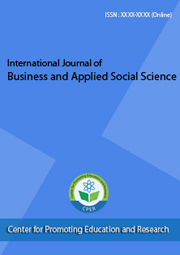current
Table of Contents
Articles
Author(s): Dr. Avylin Roziana Mohd Ariffin
Abstract:
The need for Environmental Management Accounting (EMA) can be associated with the major problems of environmental degradation that lead to other concerns, such as legitimacy and competitive issues. EMA is seen as a management accounting innovation whose consequence is a boost to corporate performance. EMA can benefit the competitive position of a firm by directing the attention of its managers towards potential cost reduction or potential areas for differentiation. EMA can also help firms gain resource productivity and process efficiency, which will result in the reduction of waste and improved the financial profitability of the firm. In other words, EMA practically improves both the environmental and economic performance of a firm. However, despite all these success stories, many firms are still reluctant to take a more proactive approach to EMA, perhaps due to a perceived lack of evidence that the benefits exceed the costs of pursuing these initiatives. The findings so far may also not be generalizable since they are based on descriptive statistics rather than rigorous hypothesis testing. There has been little empirical evidence regarding the impact of EMA on the business success of the firm. This is due to prior EMA studies that have made limited use of a theory that attempts to explain the consequences of the practice. Most research has focused on descriptive work and researchers seem to be unwilling to move beyond action-based case studies in further develop the framework of EMA practice and firm performance. This has raised a concern on the need for theoretical explanation on the consequences of EMA. As it is important to gauge the effects of EMA on firm performance, this study provides a discussion of how EMA could help companies in Malaysia to enhance both their economic and environmental performance and by this to encourage firms to put EMA in practice for their sustainable growth.






